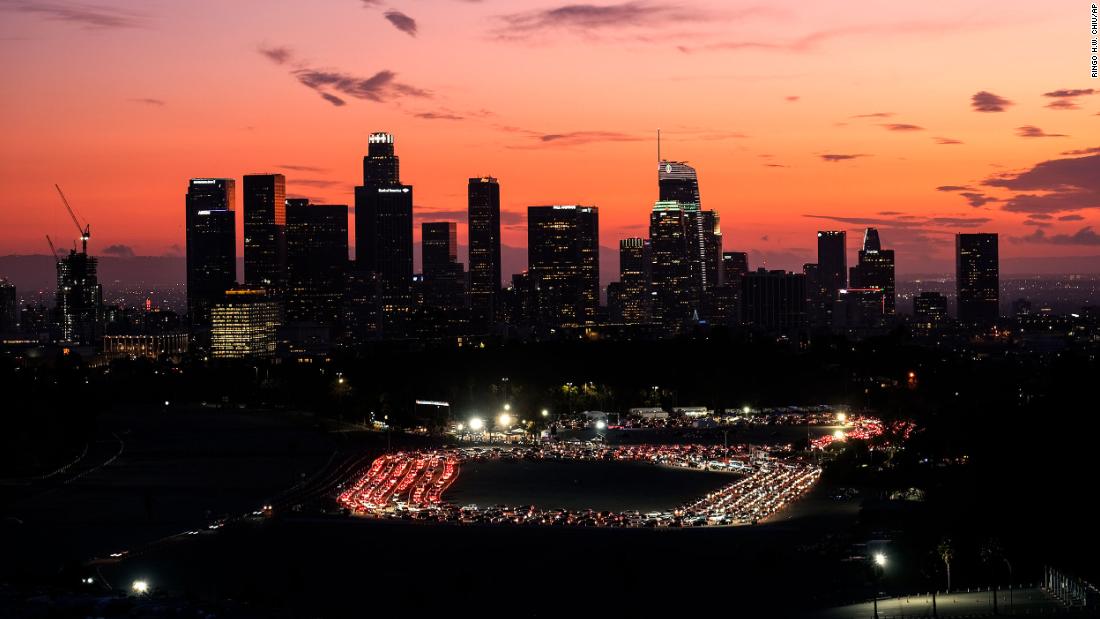However, many health officials warn that balance is needed to ensure that Covid-19’s testing efforts continue, even as the country presses for more coronavirus vaccinations.
“Converting some of these large-scale testing sites into vaccination, at least for now, makes sense – just because we have to start increasing vaccination, but I think there is a balance,” said Plescia.
“We can’t just change everything to vaccines,” he said. “We need to continue to have some resources where people can get tested.”
Ballparks become massive vaccination sites
The announcement noted that the change in resources “will temporarily reduce testing capacity” in Los Angeles County, but “will more than triple the number of daily vaccines” available to locals.
“Vaccines are the safest way to defeat this virus and chart a path to recovery, so the city, the county and our entire team are putting our best resources into the field to vaccinate Angelenos as quickly, safely and efficiently as possible.”
“These stadiums are wonderful areas to be reused for larger mass vaccination efforts,” said Freeman, but added that testing is still a priority.
“We have so many places across the country that still have high levels of transmission and resurgence of the disease, that we cannot stop doing the tests now,” she said. “We are too early in the vaccination process to do this, because we still need to mitigate and control the spread of the disease, even while we are vaccinating.”
More mass vaccination sites are likely to emerge after the U.S. Department of Health and Human Services announced on Tuesday that the federal government would help states install them.
‘We will not vaccinate our way out’ of the current increase
After falling in late December, testing in the United States rebounded to the record level reached before the holiday. According to the Covid Tracking Project, the seven-day average of new tests has reached more than 1.9 million a day and has never been higher.
“Counties and local public health departments will find ways to continue testing and testing on a large scale,” said Bryant.
Reusing stadiums and other large vaccine sites will be a good thing for vaccine delivery, she said. “As far as testing is concerned, we know at the local public health level that this is still very important and we would not do one to sacrifice the other.”
Tests and vaccinations serve different purposes.
“In an ideal world, we would have sufficient resources to optimize the launch of the vaccine, as well as continue testing at the volumes that are needed,” she said. “I think there will always be a little give and take.”
Plescia, of the Association of State and Territorial Health Officers, agrees that vaccination is the way out of the pandemic – but it is not the way out of the record number of cases and deaths the country is now facing.
“This is the problem that we are in now, with the rapid rise in infection rates, with hospitals getting filled with more and more people dying, we are not going to vaccinate to get out of this,” said Plescia.
“What we do now with vaccination is not really going to bear fruit for several months. So, to control what is happening now, we have to continue doing the tests, isolating and quarantining people, making people wear masks and maintain social distance. “
